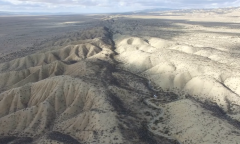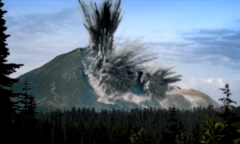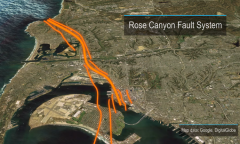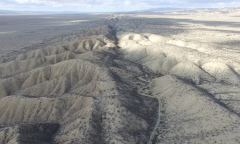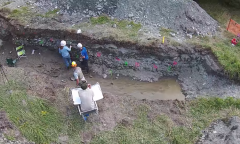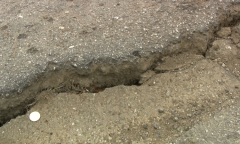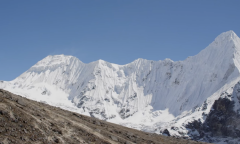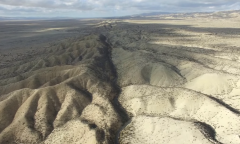By KM Diaz, | June 18, 2017
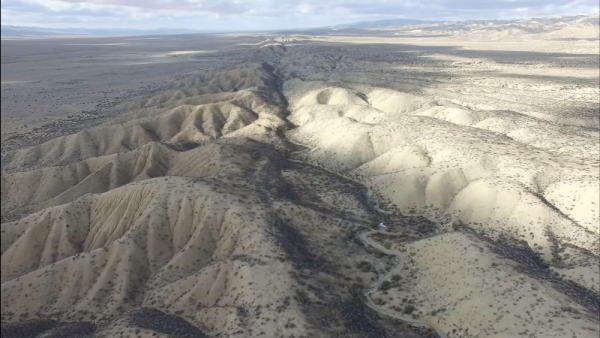
San Andreas Fault in California (YouTube)
Scientists have found that earthquakes in San Andreas Fault in California are triggered by winter rain and snowfall. This significant finding could help them in understanding the underlying causes of temblor and when they are more likely to occur.
Christopher Johnson and Roland Bürgmann, researchers from the UC, Berkeley, studies the influence of seasonal loading on fault system. Seasonal loading is how rain and snow act as a weight within winter months, leading the land to depress. When the land dries up, the weight will be removed then the ground rebounds. This process, according to scientists, modifies the stress located on California's state tectonics - pushing and pulling on the fault lines - including the San Andreas Fault.
Like Us on Facebook
The San Andreas Fault extends 800 miles from California and makes the tectonic boundary between the Pacific and North American Plate. In September 2016, a swarm of about 200 small earthquakes occurred in the Salton Sea - south of the fault. Because of this, people were concerned that larger earthquake could happen as the region of the fault where swarm occurred had not cracked for 300 years. Normally, massive earthquakes happen along the fault for every 150 to 200 years, scientists believe that the "Big One" is already overdue.
In the latest study of Johnson and Bürgmann, they measured the vertical movement along fault lines in the state to trace changes, leading from seasonal loading. The GPS data on vertical deformation for nine years were used to understand the stress changes over the fault lines, producing small quakes.
They calculated the seasonal stress time on every location of the fault to estimate an average stress cycle. The finding revealed that San Andreas Fault has increased small temblors during the early fall and late summer, while the fault in the eastern edge of the Sierra Nevada likely experienced more earthquakes in early summer and late spring. Bürgmann noted that it does not necessarily mean that there is an "earthquake season," but seasonal loading plays an important key in the finding.
According to Johnson, the stresses from the flexing of the crust because of seasonal loads correlate for nearly 10 percent change in seismic activity from the background rates. The annual rainfall and snow increase the chance of temblor by a small amount and the finding presents new insight on why and how faults rupture, including several stresses.
The study is not directly looking at large earthquakes, but scientists did check the historic temblors bigger than magnitude 5.5 since 1781. Earthquakes slightly increased when seasonal loading was high than when it was low. Earlier in this year, scientists from Stanford University said that California will likely experience more summer droughts and winter floodings in the future due to climate change.
Johnson, on the other hand, also said that it is not clear if extreme events could trigger more quakes in the future as they did not study longer-term trends. Their next step is to refine the model used for seasonal loading to understand what makes temblors go.
The study was published in the journal Science.
-
Use of Coronavirus Pandemic Drones Raises Privacy Concerns: Drones Spread Fear, Local Officials Say

-
Coronavirus Hampers The Delivery Of Lockheed Martin F-35 Stealth Fighters For 2020

-
Instagram Speeds Up Plans to Add Account Memorialization Feature Due to COVID-19 Deaths

-
NASA: Perseverance Plans to Bring 'Mars Rock' to Earth in 2031

-
600 Dead And 3,000 In The Hospital as Iranians Believed Drinking High-Concentrations of Alcohol Can Cure The Coronavirus

-
600 Dead And 3,000 In The Hospital as Iranians Believed Drinking High-Concentrations of Alcohol Can Cure The Coronavirus

-
COVID-19: Doctors, Nurses Use Virtual Reality to Learn New Skills in Treating Coronavirus Patients


